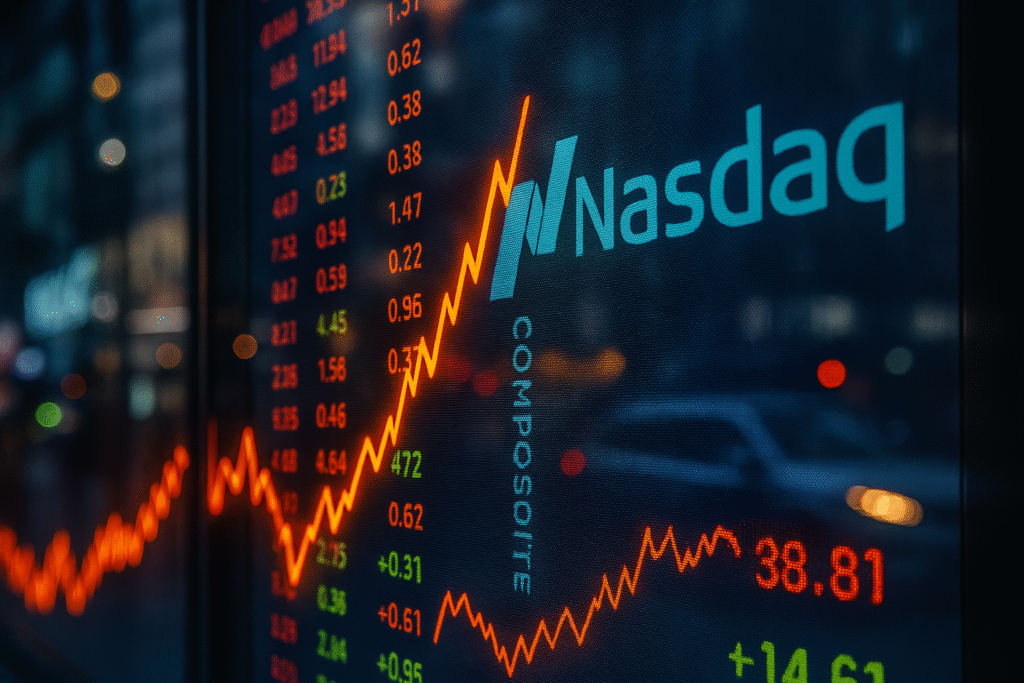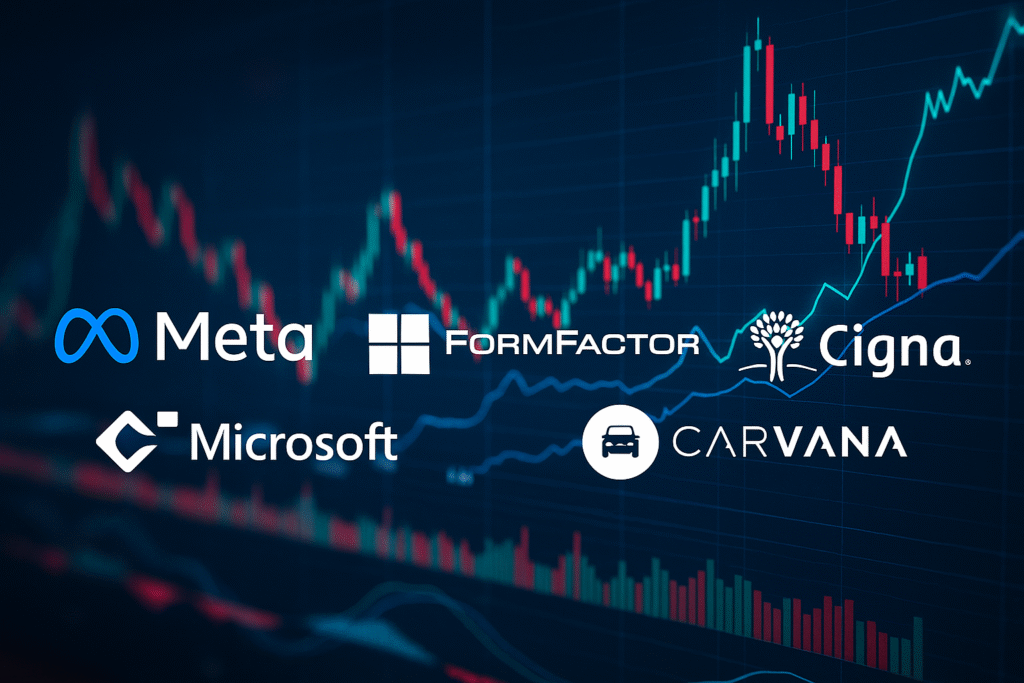Wall Street Opens the Week With Uneven Momentum
U.S. markets opened the week mixed Monday as investors balanced strong Big Tech momentum with weak manufacturing data and lingering uncertainty from Washington’s government shutdown.
The Nasdaq Composite (^IXIC) climbed 0.5%, lifted by continued enthusiasm for artificial intelligence stocks. The S&P 500 (^GSPC) edged 0.1% higher, while the Dow Jones Industrial Average (^DJI) lost 0.5% as cyclical names lagged.
Wall Street is attempting to extend the rally that defined October, when optimism around AI growth, earnings resilience, and easing trade tensions helped the S&P 500 close above 6,800 for the first time.
Tech Leadership Continues With Amazon and Nvidia in Focus
Tech once again led the charge:
- Amazon (AMZN) shares soared nearly 6% after announcing a massive $38 billion partnership to accelerate AI infrastructure using Nvidia hardware. The deal underscores Amazon’s commitment to expanding its cloud and AI ecosystem.
- Nvidia (NVDA) climbed more than 2% on the news and after receiving an analyst upgrade, further solidifying its position at the center of global AI expansion.
Meanwhile, investors prepared for another packed earnings week. Over 300 S&P 500 companies have reported so far, with Palantir (PLTR), Super Micro Computer (SMCI), and AMD (AMD) among the high-profile reports still to come.
Elsewhere in corporate headlines:
- Kimberly-Clark (KMB) announced it will acquire Kenvue (KVUE) for $32 billion, creating a new health and wellness giant. Kenvue stock surged 20%, while Kimberly-Clark fell 15% following the deal.
Economic Data Delays Cloud the Outlook
The government shutdown continues to stall critical economic releases, including this week’s nonfarm payrolls report, leaving markets without key insights into job growth and inflation trends.
In the meantime, private-sector indicators are taking center stage:
- The Institute for Supply Management reported that U.S. manufacturing contracted for the eighth consecutive month, highlighting persistent weakness in industrial output.
- Traders will also watch Friday’s University of Michigan consumer sentiment survey, which could offer clues about whether rising prices and political gridlock are starting to weigh on consumer spending.
The ongoing data blackout has forced analysts to rely on limited indicators to gauge the economy’s trajectory — a situation that adds uncertainty ahead of the Federal Reserve’s next policy signal.
Oil Markets Shift as OPEC+ Adjusts Strategy
Energy markets added another layer of complexity.
OPEC+ announced plans to raise oil production by 137,000 barrels per day in December, then pause increases through the first quarter of 2026 — signaling a strategic recalibration amid shifting global demand.
Brent crude futures (BZ=F) slipped 0.4%, while U.S. benchmark WTI crude (CL=F) fell 0.6% following the announcement.
According to Rystad Energy, the move brings the total unwind of prior output cuts to nearly 2.9 million barrels per day since April.
The group, led by Saudi Arabia, said the decision to pause reflects “seasonality and the need for flexibility,” acknowledging potential oversupply risks early next year.
Recent U.S. sanctions on Russian energy giants Rosneft and Lukoil have added fresh uncertainty, potentially tightening supply if Russian barrels decline more than expected.
Analysts at Rystad called the pause “a calculated move” — one that protects prices, maintains unity, and allows the bloc to assess the impact of sanctions before resuming production growth.
WSA Take
Monday’s session underscored a market divided between AI-driven optimism and macro-level caution.
Big Tech continues to defy gravity — with Amazon, Nvidia, and their peers extending the AI-fueled run — even as manufacturing weakness, oil volatility, and political dysfunction weigh on broader confidence.
In short: the AI trade is still the market’s engine, but the road ahead looks bumpier as fundamental data gaps widen.
Read our recent analysis of Microsoft’s 60,000-chip export deal with the UAE.
Explore the latest coverage on the Wall Street Access homepage.
Disclaimer:
Wall Street Access does not work with or receive compensation from any public companies mentioned. Content is for informational and educational purposes only.








